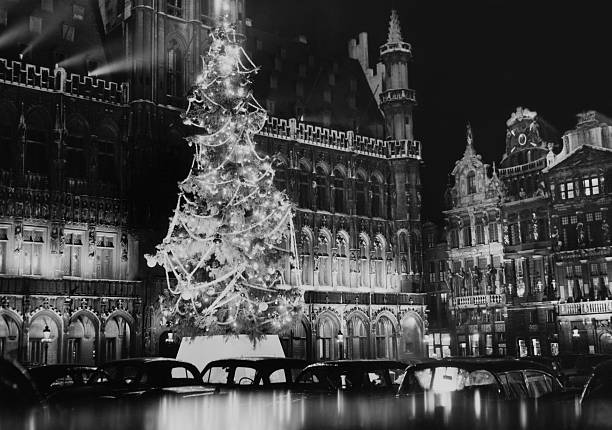Christmas lights and greeting cards have all been part of family traditions for years. Ever since the first Christmas memory developed, odds are, that memory is crafted around the profound amazement of a light display. The child-like awe that comes from gazing at those bright lights is never lost; the line from The Christmas Song, “Kids aged one to 92,” is truly epitomized by the dancing lights of the season. Yet, where does the history of ingrained seasonal festivities develop? Take a peek through a museum’s collection of Christmas lights and greeting cards, and explore the history of seasonal artifacts through the eyes of a museum.
Dainty Glass Eggs – Christmas in the Museum Collection
The First Christmas Lights
When people first started to bring Christmas trees indoors, they would use open flame candles in their trees. These were clipped to the tree or mounted on counterbalanced holders. Thomas Edison produced the world’s first practical light bulb in 1879. Three years later, the vice president of Edison’s Electric Company, Edward Johnson, electrically lit a Christmas tree for the first time. The display was housed in Johnson’s New York City parlour, located in the first part of the City to be wired for electricity.
In true American fashion, this first electrically lit tree sported about 80 lighted globes in red, white, and blue. The tree was mounted on a pine box housing a hidden floor crank, which turned the tree. With each revolution the colours alternated. The small lights were touted as a safer, less smoky and less odoriferous option to old-fashioned wax candles.
A Continuous Twinkling of Dancing Colors
The sight of the Johnson parlour caused quite a commotion. Even the press took note; Wrote one Mr. Croffut in the Detroit Post and Tribune about the scene:
“There, at the rear of the beautiful parlors, was a large Christmas tree presenting a most picturesque and uncanny aspect. It was brilliantly lighted with many colored globes about as large as an English walnut and was turning some six times a minute on a little pine box,” wrote the impressed Mr. Croffut.
“There were eighty lights in all encased in these dainty glass eggs, and about equally divided between white, red and blue. As the tree turned, the colors alternated, all the lamps going out and being relit at every revolution. The result was a continuous twinkling of dancing colors, red, white, blue, white, red, blue—all evening. ”
A Merry Christmas and A Happy New Year to You
The first printed Christmas card was designed by John Horsley in 1843 for Henry Cole. The card simply read “A Merry Christmas and A Happy New Year to You.” Three years later, 1,000 copies were lithographed and sold to the public. This first card did by no means establish the Christmas cars industry.
Other cards appeared only sporadically over the next couple of decades. In 1860, however, British publisher Charles Goodall & Son began to produce a type of card left as a reminder of a visit. The cards worked much in the same way as the modern day business cards do. Goodall also made cards specifically designed for visits made at Christmas time. The next step from these cards were cards sent off to carry season’s greetings in lieu of a visit.
From Candle to Light Bulb to Candle; Christmas Goes Full Circle
By the mid-1890s, the greeting card market was flooded with less expensive cards, most of which were made in Germany. At that time, mechanical cards with parts that moved or popped became popular as well. Because those cards had many moving parts, and as a result of the fragile nature of their design, few such cards survive in good condition today.
A cursory look through the Trethewey House collection’s many greeting cards show how they’ve developed over time. From the very Victorian artwork feathery flowers no longer associated with Christmas, via Art Deco cards from the early 20’s and gaudy photographs from the 70’s, until we come full circle to the Victorian reproductions of the 1990’s, we see how art, life and society has changed. Notably, there are no Christmas lights depicted on the cards. Instead, the cards stick to the ambiance of the good old wax candles of yore.
Main Image:

